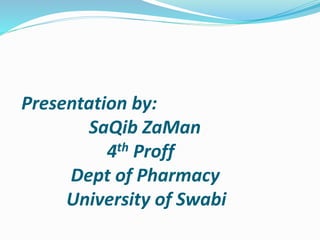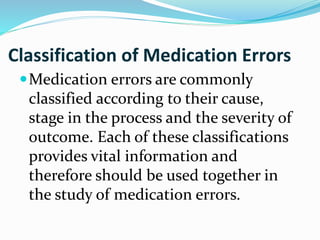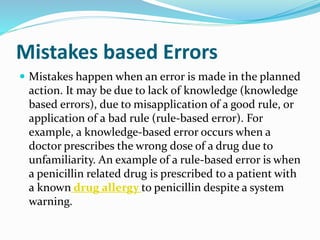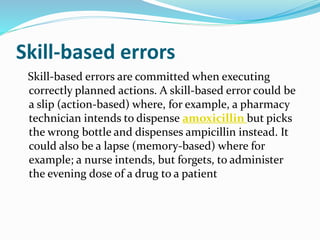The document discusses medication errors, which are preventable failures in the treatment process that can harm patients. It defines medication errors and classifies them by cause, stage of occurrence, and severity of harm. Prescribing errors are the most common, followed by administration and dispensing errors. Technologies like computerized prescribing and barcoding can reduce errors but implementing them faces challenges. Improving handwritten prescription quality, such as using standard formats and avoiding ambiguous abbreviations, also aims to reduce errors. The conclusion emphasizes that both technological solutions and improving manual processes are needed to enhance patient safety by reducing medication errors.
































